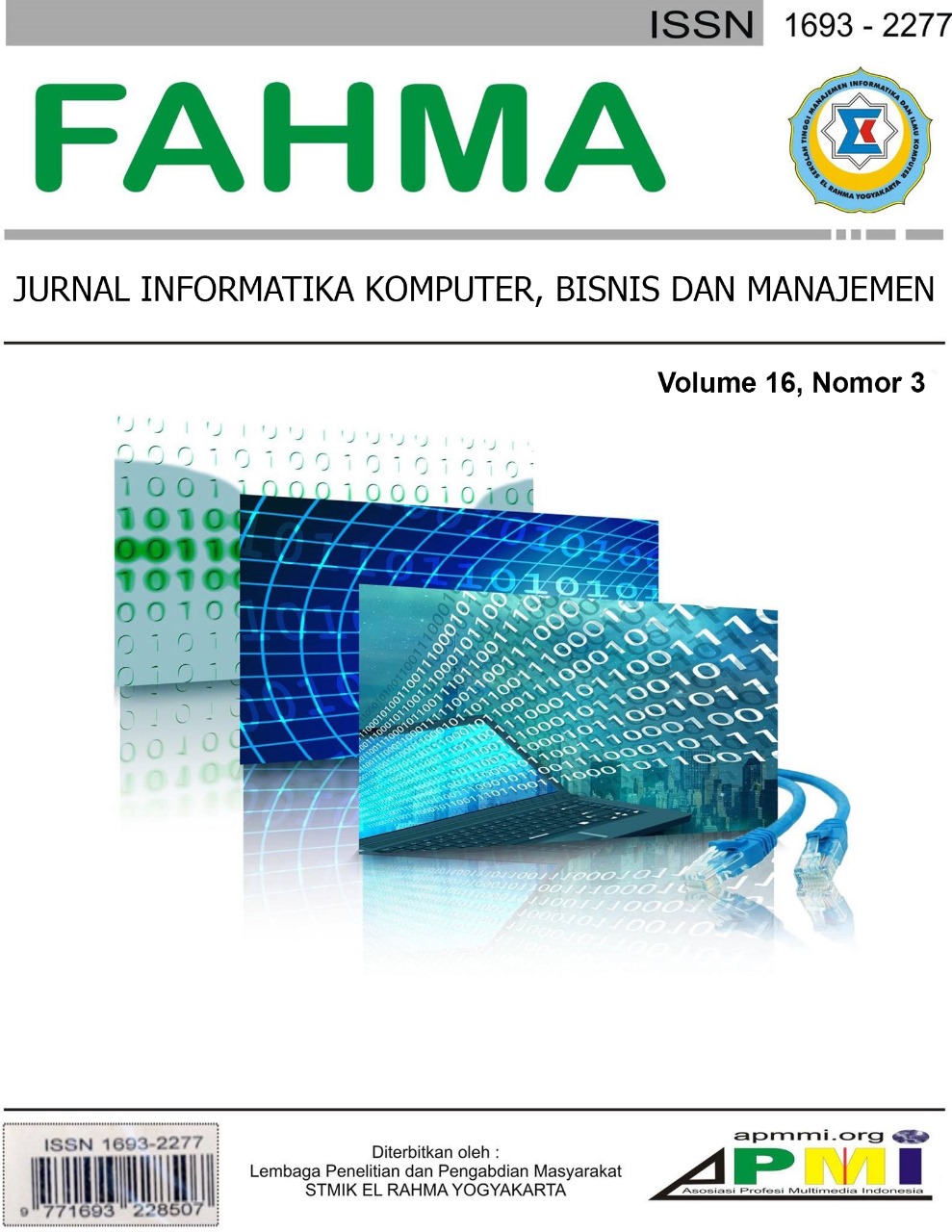PERBANDINGAN KLASIFIKASI ALGORITMA K-NN, NEURAL NETWORK, NAÏVE BAYES, C 4.5 UNTUK MENDETEKSI WEB PHISING
DOI:
https://doi.org/10.61805/fahma.v16i3.88Kata Kunci:
Web Phising, Classification, Data MiningAbstrak
The increasing number of internet users in the world and the rise of web phishing. Based on the Wearesocial report, there are several facts which include the number of world internet users that have reached 4.021 billion people. explained that of the hundreds of millions of internet users in Indonesia, 60 percent have accessed the internet using smartphones. Internet usage is dominated by socializing activities in cyberspace. Evidenced by the large number of world social media users, reaching 3,196 billion users. But with the rise of internet users and social media accompanied by the proliferation of phishing webs. The purpose of this attack is to make users believe that they interact with the official virtual or online site in question. Generally the information sought is in the form of a password, account or victim's credit card number. by way of being directed to a fake web or sending an email, banner or pop-up where the victim is asked to give his personal information. In this study C.4.5, Neural Network and K-Nerest Neighbor algorithm comparison will be conducted to determine the performance of the algorithm in detecting webphising by using classification techniques. Based on the model testing based on the Naïve Bayes method, Decision Tree C.4.5, K-NN, Neural Network uses the Weka framework v.3.8.2. The results of the Decision Tree C.4.5 algorithm have a higher level of accuracy with 89.66 percent accuracy.
Unduhan
Referensi
“Digital in 2018: World’s internet users pass the 4 billion mark - We Are Social,” wearesosial.com. [Online]. Available: https://wearesocial.com/blog/2018/01/global-digital-report-2018. [Accessed: 20-Nov-2018].
P. Kaur, M. Singh, and G. S. Josan, 2015, “Classification and Prediction Based Data Mining Algorithms to Predict Slow Learners in Education Sector,” in Procedia Computer Science.
R. M. Mohammad, F. Thabtah, and L. McCluskey, 2014, “Predicting phishing websites based on self-structuring neural network,” Neural Comput. Appl.
S. Widodo, 2017, “Klasifikasi Situs Phishing dengan Menggunakan Neural Network dan K-Nearest Neighbor,” Inf. Manag. Educ. Prof., vol. 1, no. 2, pp. 145–154.
O. N. Pratiwi, 2013, “Predicting student placement class using data mining,” in Proceedings of 2013 IEEE International Conference on Teaching, Assessment and Learning for Engineering, TALE 2013.
Jiawei Han and Micheline Kamber, 2006, Jiawei Han & Micheline Kamber, Second Edi. San Francisco: Morgan Kaufmann Publishers.
F. Amato, A. López, E. M. Peña-Méndez, P. Vaňhara, A. Hampl, and J. Havel, 2013, “Artificial neural networks in medical diagnosis,” Journal of Applied Biomedicine.
M. P. Kinjal Jadav, “OPTIMIZING WEIGHTS OF ARTIFICIAL NEURAL NETWORKS USING GENETIC ALGORITHMS.”
X. Yu, L., Chen, G., Koronios, A., Zu, S., & Guo, 2007, “Application and Comparison of Classification Techniques in Controlling Credit Risk,” Recent Adv. Data Min. Enterp. Data, vol. 111–146.
E. T. L. Kusrini, 2009, Algoritma Data Mining.
M. Bramer, 2007, Principles of Data Mining, Undergraduate Topics in Computer Science.
D. M. W. Powers, 2011, “Evaluation: from precision, recall and F-measure to ROC, informedness, markedness and correlation,” J. Mach. Learn. Technol.
Y. Pristyanto, I. Pratama, and A. F. Nugraha, 2018, “Data level approach for imbalanced class handling on educational data mining multiclass classification,” in 2018 International Conference on Information and Communications Technology, ICOIACT 2018.
M. Han, J., & Kamber, 2006, Data Mining: Concepts and Techniques Second, Second Edi., vol. 12. San Fransisco: Morgan Kauffman.









